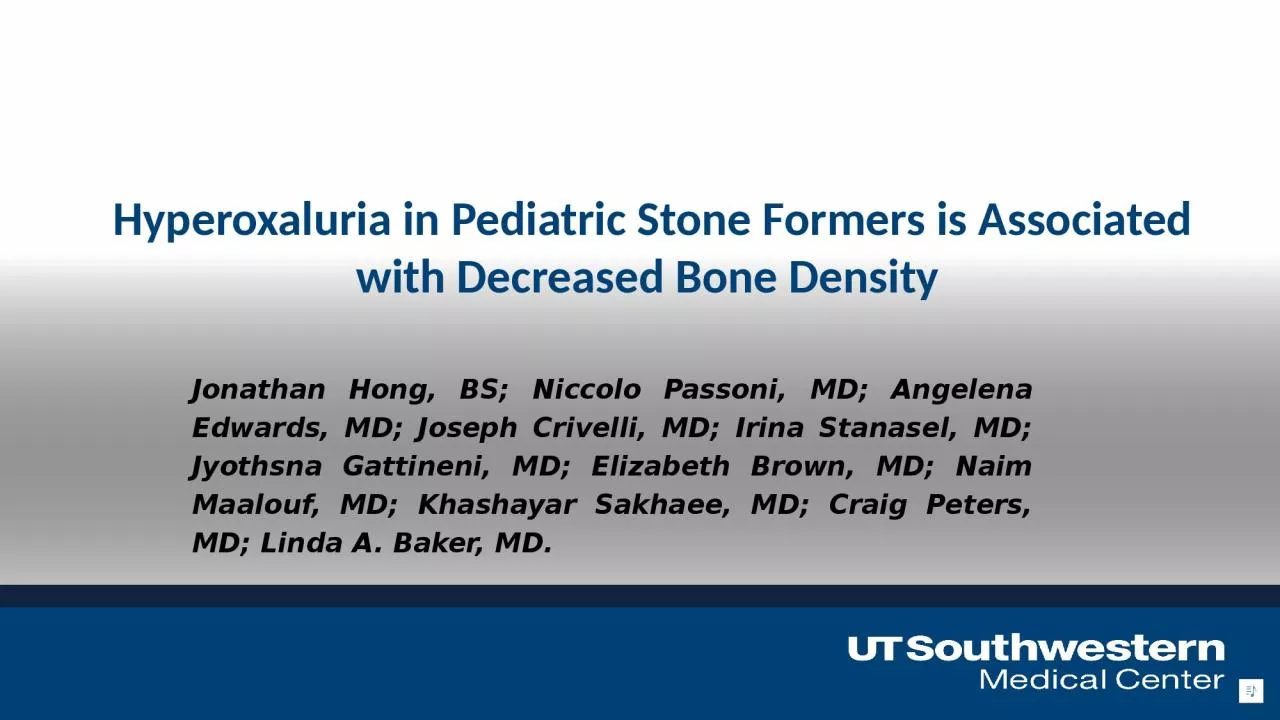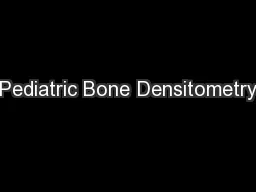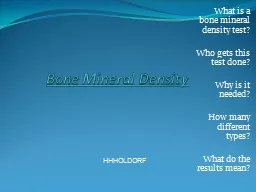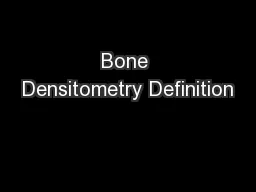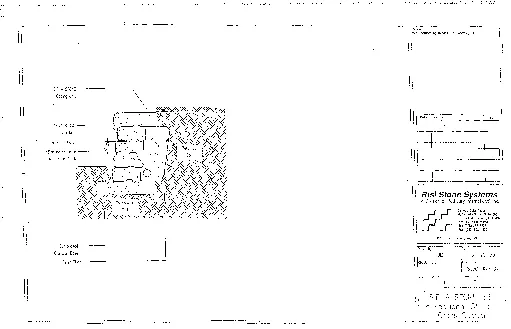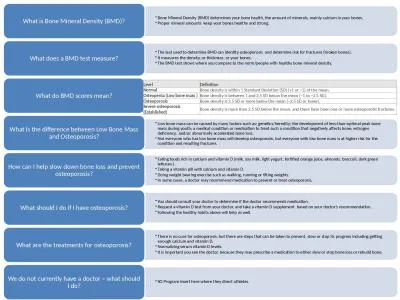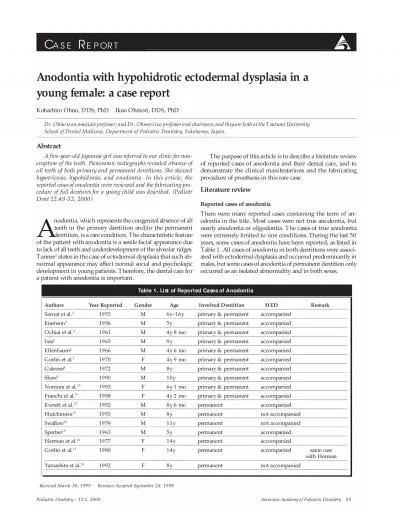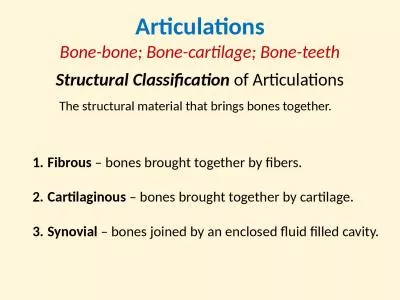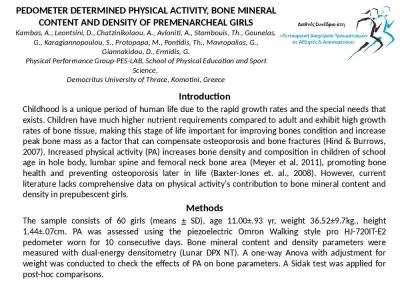PPT-Hyperoxaluria in Pediatric Stone Formers is Associated with Decreased Bone Density
Author : susan2 | Published Date : 2024-02-16
Jonathan Hong BS Niccolo Passoni MD Angelena Edwards MD Joseph Crivelli MD Irina Stanasel MD Jyothsna Gattineni MD Elizabeth Brown MD Naim Maalouf MD
Presentation Embed Code
Download Presentation
Download Presentation The PPT/PDF document "Hyperoxaluria in Pediatric Stone Formers..." is the property of its rightful owner. Permission is granted to download and print the materials on this website for personal, non-commercial use only, and to display it on your personal computer provided you do not modify the materials and that you retain all copyright notices contained in the materials. By downloading content from our website, you accept the terms of this agreement.
Hyperoxaluria in Pediatric Stone Formers is Associated with Decreased Bone Density: Transcript
Download Rules Of Document
"Hyperoxaluria in Pediatric Stone Formers is Associated with Decreased Bone Density"The content belongs to its owner. You may download and print it for personal use, without modification, and keep all copyright notices. By downloading, you agree to these terms.
Related Documents

